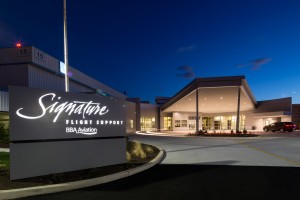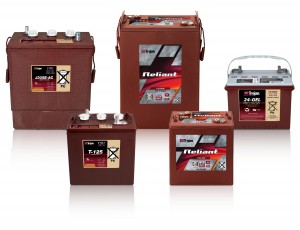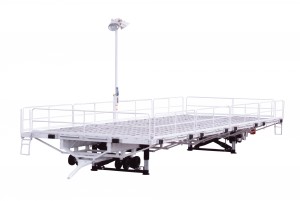WestJet selects Jettainer to manage ULD fleet
The management and maintenance of WestJet’s pallets and containers has been assigned to Jettainer, whose operations will begin with the launch of the airline’s new wide-body service.
The first of four newly delivered Boeing 767-300 aircraft will carry approximately 400 pallets and containers as it begins operations with the launch of WestJet’s non-stop service from Canada to Europe and other regions of the world. The ULD fleet will continue to expand as additional units are added to WestJet’s inventory.
Of the recent acquisition, Managing Director of Jettainer, Carsten Hernig, said: “We are delighted to have won WestJet as a new customer. By signing with this Canadian airline, we were first of all able to further strengthen our position in the Americas, one of our most important growth markets.”
Jettainer has been paying particular attention to this region of the world recently, having established Jettainer Americas in 2014 with the opening of several offices in North America. Additionally, the company took over the ULD management for American Airlines and KF Aerospace as part of its regional investment and wider aim to achieve close market presence in the Americas.
Hernig went on to say: “This new contract also confirms our aim at approaching low cost carriers and leisure airlines, which are expanding their product portfolio, for example in terms of adding wide-body aircraft to their fleets in order to serve long-haul destinations. Such companies highly appreciate having a strong partner offering both a global network and the complete ULD management service portfolio, which includes the steering, positioning, maintenance and repair of loading devices.”

United to allow time-saving taxi-ing
Weight and balance sheets are traditionally signed off at the stand prior to pushback, but United Airlines is challenging the status quo with its proposal, stated on July 31, to revert to a pre-merger policy that permits all pilots to taxi before receiving final weights.
Despite United Airlines having long permitted this of its pilots, Continental Airlines, with whom it merged, has contrastingly required pilots to wait in the gate area for final numbers prior to taxi-ing. Thus, the United-Continental combined carrier preferred the latter approach, making the recent proposal somewhat controversial.
United argues that waiting for final numbers is problematic in that it can lead to delays and has told pilots that the new policy will help to ensure that aircraft leave gates and runways in a more timely manner. The carrier hopes the new policy will “reduce gate-availability delays for inbound flights” and told pilots that the new system should enable a “safer, more efficient and reliable operation.”
Pilots were also told: “[This] allows our airport operations co-workers a realistic amount of time to input accurate payload values into the load planning system, getting it right the first time as opposed to sending through revisions.”
Several of United’s fleet have already started using the new policy and the remaining aircraft models should soon join the ranks. It was hoped that by the end of last month United’s largest fleet, the Boeing 737, would have implemented the new policy, bringing the airline into alignment with other US carriers, most of which allow pilots to begin taxi-ing before final numbers are calculated.

Asia Pacific’s top five airports see decline in cargo
A large percentage of the world’s major airfreight hubs are located in the Asia Pacific region. Following the recent decline in key developing markets like China, in addition to oil producing economies, and the subsequent weakness this has caused in other areas of the economy, a slowdown in airfreight volumes has been recorded. Volumes were flat this July, showing no year-over-year growth from the previous July. In fact, of the region’s top five airports, all experienced a reduction in freight volumes for the month of July, with Hong Kong seeing a 1.9% decrease.
The story was slightly different in North America, where air cargo figures were rather more mixed amongst the region’s busiest cargo hubs, in terms of year-over-year growth. Memphis, a FedEx hub, and Louisville, a UPS hub, experienced growth of 2.5% and 4.2% respectively; however airports that have a larger international component to their freight saw volumes drop. Anchorage and Miami, for example, saw air freight traffic drop by 5.6% and 2.3% respectively. Subsequently net growth for the region as a whole was still flat.

Air Canada Cargo introduces e-booking
This September, Air Canada Cargo brought its online operations up to speed, launching an updated version of its website that enables customers to book cargo shipments directly on aircanadacargo.com
Air Canada Cargo account holders can now log in online to book and manage all their cargo shipments, including even specialized consignments, such as AC Cool Chain, AC DGR (dangerous goods) and AC Live (animals). Such bookings can be made for flights within Air Canada’s global and interline networks. The airline has commented that the new e-booking and management tool provides a “simple, intuitive interface.”
The system’s e-booking capabilities include quote estimation for the cost of the shipment and an interface for managing and tracking multiple shipments. Customers can also view the status of all their current shipments, fill out an e-AWB, add to the house air waybill, edit a shipment or print a document pouch. With the arrival of e-booking and e-AWB capability such as this in most of its network, Air Canada Cargo has been encouraging its customers to fully participate in the digitization of their shipping systems and aims to renew emphasis on the benefits of going paperless, with a specific promotion campaign intended for a launch in the coming weeks.

AA team executives join E-team
Episcale, the Florida-based technology company which specializes in paperless transactions, recently saw two former American Airlines executives join the team to help promote a cloud-based e-air waybill solution, the eFreight360.
David Brooks, former President of American Airlines Cargo, has joined Episcale as an advisor. Remarking on the new product’s potential, he said: “It leverages cloud and XML technology to reduce the barriers users face in moving to a paperless environment.” He added, “When I formally left the industry, the community was whining that to go paperless meant duplicate processes and rekeying of data, which mitigated the benefits of getting rid of the paper. eFreight360 makes it possible to harvest shipment data, consolidate and distribute it more efficiently.”
Also joining the line-up is former Executive Vice President of AA customer service, Jon Snook, who has joined Episcale as an advisor, too. He brings 25 years’ experience working in various departments for American Airlines, including cargo, trucking, ground handling and passenger processing, and has held positions including Vice-President Operations Planning and Managing Director Sales and Marketing for Europe, Middle East and Africa.
Jon Snook described Episcale’s eFreight360 as the world’s first and only fully paperless air cargo solution, bringing “modern cloud-based technology to the air cargo market that will not only dramatically streamline air freight processes, but will truly revolutionise the way world commerce is transacted.”
Mr Brooks concluded that the eFreight360 “will bring huge value to any organization involved in the air freight shipping process.”




